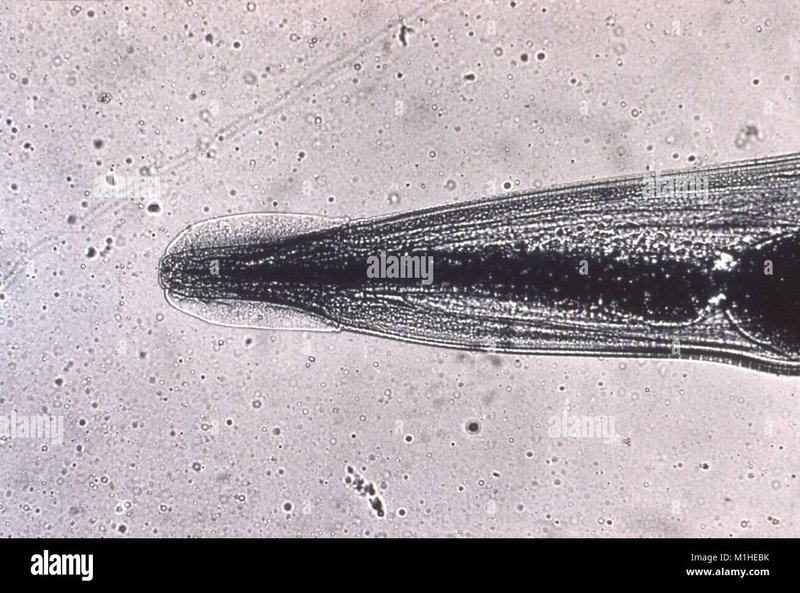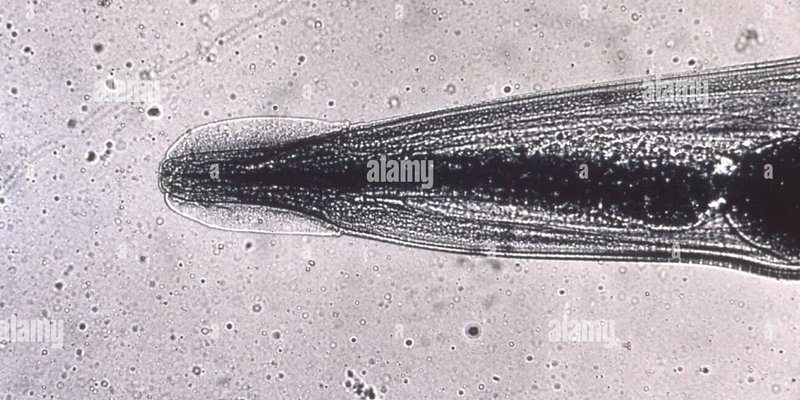
So, can we actually keep these worms for scientific study or even farming? The answer is yes, and we’ll dive into how this works, the benefits, and the practicalities involved. Just like owning a pet hamster requires a bit of know-how, managing pinworms in captivity has its own set of rules.
What Are Pinworms and How Do They Live?
Pinworms are small, white, thread-like worms that are very common among humans, especially children. They live in the intestines and come out at night to lay eggs around the anus. It’s a bit like having a secret party while you’re asleep! This behavior can lead to itching and discomfort, making them notorious little critters.
In the wild, pinworms thrive in environments where humans live. They spread easily through contaminated surfaces, hands, and bedding. So, when we consider pinworms in captivity, we need to replicate their natural habitat as closely as possible. Understanding their life cycle is crucial, as it involves eggs hatching and larvae maturing inside the host. This knowledge is essential if you’re thinking about studying them in a controlled setting.
Why Study Pinworms?
Studying pinworms might not sound super exciting at first, but there’s a lot to gain from understanding these little guys. For one, they can help researchers learn more about how parasites operate within the human body. This includes studying the immune response to infections and potential treatments. Honestly, we can find new ways to tackle parasitic infections by examining how pinworms affect our bodies.
Moreover, pinworms serve as excellent models for teaching about parasitology due to their simple life cycle and the ease of observation. Students and researchers can conduct experiments to learn more about host-parasite relationships. They can witness firsthand how pinworms interact with human hosts, which is pretty valuable in medical education.
How to Keep Pinworms in Captivity
If you’re considering keeping pinworms for study, here’s a step-by-step guide to get you started. First, you want to ensure you have the right conditions for them:
1. Setting Up the Habitat: Use a small container with a lid to prevent escape. Make sure it has proper ventilation—think of it like your pet fish needing oxygen in the tank.
2. Temperature and Humidity: Pinworms thrive in a warm environment, ideally around room temperature. Keep the humidity levels moderate to replicate the intestinal environment they’re used to.
3. Food Source: While pinworms themselves don’t need food in a typical sense, their eggs and larvae need a host organism (like humans) to study effectively. Therefore, they’re usually kept in conjunction with a host.
Keeping them requires careful attention to cleanliness and hygiene, since pinworms can quickly reinfect hosts if not managed properly. This might feel a bit like juggling, but with practice, you can get it balanced.
Challenges of Farming Pinworms
Farming pinworms isn’t as straightforward as it sounds. Here are some challenges you might face:
– Reinfection: If not handled properly, pinworms can easily reinfect their hosts, leading to continuous cycles. This makes it difficult to study them in a controlled environment.
– Ethical Concerns: Keeping parasites raises ethical questions, especially regarding the health of the host. It’s crucial to ensure humane conditions and proper care when studying these organisms.
– Legal Regulations: Depending on your location, there may be legal restrictions on keeping and studying parasites. Always check local regulations before proceeding.
These challenges might feel daunting, but with the right resources and guidance, they can be managed effectively.
Educational and Research Applications
Pinworms have a lot to offer when it comes to education and research. For students, they present a unique opportunity to learn about parasitology firsthand. Here are a few ways they can be utilized:
– Laboratory Education: Pinworms can be used in lab settings to teach students about host-parasite dynamics, infection cycles, and even the immune response.
– Research Projects: Researchers can conduct experiments on how different treatments affect pinworms, which can lead to better understandings of parasitic infections.
– Public Health Studies: Understanding pinworm infections can help in public health initiatives aimed at reducing their spread, especially among children.
Using pinworms in education helps demystify the world of parasites and make it relatable for students.
Alternatives to Pinworm Farming
If pinworm farming feels like too much, there are alternatives to studying parasitic organisms. Many labs use other simple organisms, like *Caenorhabditis elegans* (a microscopic worm), as models for parasite research.
Some benefits of alternatives include:
– Easier to Manage: Organisms like *C. elegans* are easier to keep in laboratory settings and don’t pose the reinfection risks that pinworms do.
– Widely Studied: Many scientific studies have already been conducted using these alternatives, so there’s a wealth of existing knowledge to build upon.
– High Reproducibility: Because they can be bred in a laboratory environment, it’s easier to control variables and replicate studies.
Using easier-to-manage models can still provide valuable insights into parasitic behavior and human interaction without the complicated logistics of keeping pinworms.
Keeping pinworms in captivity for study is definitely possible, but it comes with its own set of challenges and rewards. Whether you’re interested in researching them for scientific curiosity, educational purposes, or just want to learn more about these tiny beasts, understanding how to manage their environment and their life cycle is key.
Despite the hurdles—like ethical considerations and the potential for reinfection—pinworms still offer a unique lens through which we can view parasitology. If you’re not ready for the commitment, consider alternative organisms that can provide similar insights while being easier to handle. Whichever path you choose, you’ll uncover fascinating details about the world of tiny parasites.

